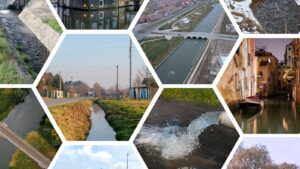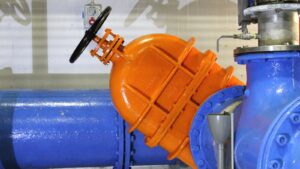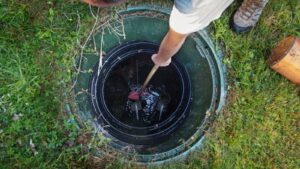Critical infrastructure refers to the type of assets, networks and systems essential for the security or survival of a nation’s economy and public services. The majority of critical infrastructures are common to each country. However, where a country depends on a specific industry economically, the crucial asset a country may identify could be different. As denoted by the term ‘critical’, if any of such assets are in bad condition or impacted negatively, the country has no choice but to either repair or replace them. In other words, investing in such assets is essential. However, understanding that public resources have a limited budget, it is better to take asset management measures. This article will explain how asset managers can optimise asset management for critical infrastructure.
What Sort of Asserts Go Under Critical Infrastructure?
Traditionally critical assets were based on industries such as energy, gas, water, national security and transportation. Over the years, however, critical infrastructure sectors have extended to communications, financial services and markets, data storage and processing, higher education and research, space technology, energy, health care and medical, food and grocery, higher education and water and sewage.
The Australian government recently published a Critical Resilience Strategy that defines critical infrastructure as ‘those physician facilities, supply chains, information technologies and communication networks, which if destroyed, degraded or rendered unavailable for an extended period would significantly impact social or economic wellbeing of a nation or affect Australia’s ability to conduct national defence and ensure national security’. In other words, assets that underpin our society, which humans rely on for their everyday lives, are critical. As a nationAustralia has taken steps to ensure critical assets are protected. For instance, the Security of Critical Infrastructure Act 2018, known by its abbreviated term SOCI, is an essential legislative measure that places obligations on owners and operators of critical infrastructures.
Three Ways to Optimise Asset Management for Critical Infrastructure
As the world is getting more connected, industries are integrating digital technologies to strengthen the resilience and labour shortages faced. Here are three ways digitalisation can help optimise asset management of critical assets:
Predictive Analytics and Satellite Data Analytics to Warn You of Natural Disasters
Critical assets are integral to the economy, thereby requiring asset managers to be prepared to face any challenge. Instead of halting operations during a disaster, ensuring a system is already in place to carry out functions without disruption is essential. Integrating a predictive analytics system is necessary to prepare oneself for future threats.
When coupled with satellite data analytics, which many asset-centric organisations do not use; critical asset managers can quickly receive futuristic data denoting signs of impending natural disasters. Whether it is floods, landslides or anything else, advanced technology gives asset managers the flexibility to be prepared in such situations by providing recovery requirements before the event even occurs. It integrates remote sensing, satellite imagery and 3D geographic information systems (GIS) models to give asset managers a bird’s eye view of impending catastrophes that put cities, countries, states or critical infrastructure in the whole country at risk.
Predictive analytics can moreover monitor the health of any type of critical asset. Comprehensively understand and guarantee the healthy status of your critical asset by knowing when it needs maintenance. Based on such information, it can highlight the most critical assets that require repairs, allowing asset managers to prioritise and manage finances more easily. This is also infused with prescriptive analytics to tailor corresponding risk control or strategies based on the asset company’s resources and capabilities.
Creating Robust Critical Infrastructures with Digital Twin
As critical infrastructure are mandatory asset required in a nation, considering whether they are feasible enough to stay in the long term is beneficial. By taking into account today’s unpredictable weather patterns, almost any asset is subjected to an increased risk of being destroyed or not performing well for long periods. Hence, designing, engineering and constructing critical infrastructures with the help of a digital twin gives the flexibility to test out the most effective infrastructure that is robust and sustainable.
As this is a virtual replica of a physical asset, critical infrastructure operators can test its durability by carrying out various simulations. It provides 3D representations of critical assets to enable a hands-on experience is enabled so that operators can manipulate a mockup model to monitor asset coordinates, alignments and parameters. The digital twin also provides excellent integration potential, thereby collecting and storing data from dispersed sources in one visualised screen for more relevant insights.
This is a powerful, cost-effective tool during the planning and designing phase, as asset managers need not build on blind faith that it will withstand all conditions. Instead, digital twins allow you to carry out multiple designs and prototypes based on different raw materials, designs and structures to find the most suitable and efficient model. This model will be constructed, thereby saving resources and energy and limiting finances from wasted.
Industrial Internet of Things (IIoT) Sensors to Monitor Critical Infrastructures in Real Time
A multitude of materials is required to make critical infrastructures. One malfunction in any one of them could lead the entire asset to crumble or become dysfunctional. This is why carrying out daily checks on each asset is essential. As today, the number of critical infrastructure assets has widened, it is impractical to do this manually. Hence, IIoT sensors offer a cost-effective mechanism to monitor the condition of each asset 24/7.
IIoT enhances data collection by 40 per cent and minimises human efforts outstandingly. Receive data in real-time on how each asset functions and be notified the instant anything changes. Without IIoT, asset managers would not have ample data for other advanced technologies to function correctly. For instance, predictive and prescriptive analytics could not evaluate assets and isolate risks properly.
IIoT sensors find even the most minute change through their visual, auditory and temperature or vibrational patterns. Where CCTV and laser equipment are used, IIoT technology is integrated to further analytical capabilities where CCTV and laser equipment are used. Monitor the condition of each asset through the consolidated dashboard made available. Find risk patterns and upheave the overall performance of critical infrastructure assets. Based on the vendor, IIoT solutions will effectively protect the asset-centric organisation’s data and help you to meet Overall Equipment Effectiveness (OEE) standards.
There is No Money to Waste
In a world where the number of critical infrastructures is increasing, the more attention a nation is forced to give to ensure assets belonging to this category are maintained. Hence, with the limited budget made available for the public sector, unlock the advantages industry 4.0 technologies provide to save resources, finances, and energy and eliminate waste.







